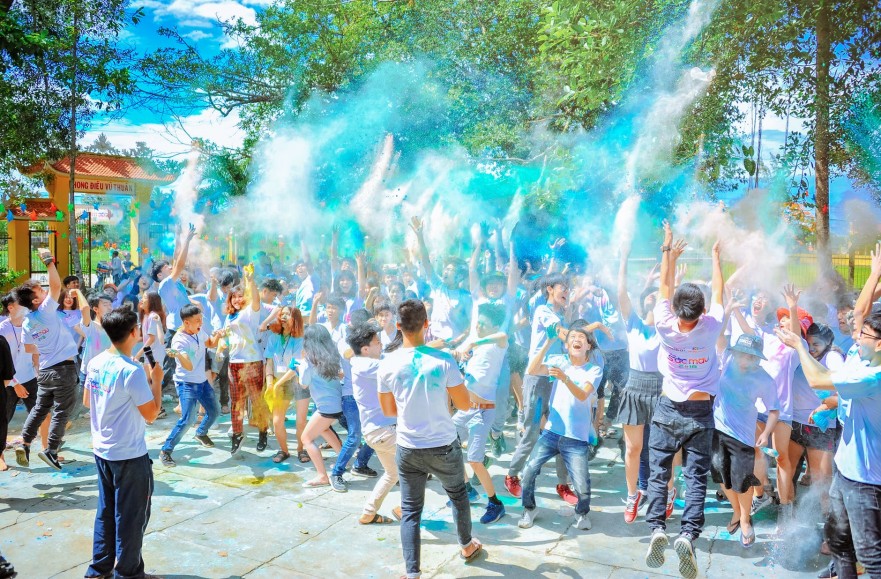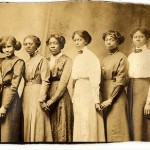“Recently, adults aren’t the only ones participating in marches and demonstrations. As educators, we should celebrate and encourage participation.” –Az K-12 Homeroom
This past week, my scholars and I have been studying Cesar Chavez and the work he did on behalf of migrant workers. My scholars were touched and moved by a poem written by Rudolfo Anaya entitled, “Elegy on the Death of César Chávez.” The poem encapsulated Chavez’s fight for the rights of migrant farm workers in America. The poem celebrated Chavez’s life and mourned his death. Throughout the poem, the poet repeated, “Rise, mi gente, rise” [rise my people] and this is when my students became the most passionate; many of my scholars are Hispanic and Native American and as a result, many felt a special connection to the poem. The discussion of the poem then turned to how, as young people, they can continue to carry on the legacy of Cesar Chavez and others like him.
This study of César Chavez as a guiding light “leading the campesinos out of the darkness of oppression and into the light of equality and justice,” really got me thinking about what it means to develop civic-minded students and how we, as educators, can foster this in our classrooms. What really is a civic-minded student? I believe it is students who are both engaged and informed about the world around them. We have to teach and remind our scholars that the world is much bigger than their living room. They need to fully grasp the concept of the realities that exist outside of their world as students. In an Az K-12 Homeroom article, the blogger writes:
“To help our students become informed adults, they must have the opportunity to learn about community affairs and the steps they can take to become more civically engaged. Regardless of political affiliation, all teachers want their students to develop the knowledge, skills, and motivation to make a positive impact on society. It’s our job to help them see themselves as change agents.”
I believe the classroom is a great place to teach our scholars how to engage in conversations on current events. In my own classroom, I accomplish this by using an activity called Spotlight on Current Events. This activity incorporates current events with whatever reading (fiction or non-fiction) or writing assignment we are studying at the time. My goal is to infuse any hot topics that are currently in the news with the curriculum in order to spark lively in-class discussions and to help foster civic awareness. The “Elegy on the Death of César Chávez” sparked many fireworks in the classroom because of the current immigration issues in the news, to include the debate for and against the border wall.
It took some time for me to realize that my scholars weren’t always quiet because they had nothing to say; they were quiet because they didn’t know how to articulate what they wanted to say. In addition, their overall writing efforts lacked depth, and again, it wasn’t because they weren’t bright; it was because my scholars just didn’t know how to approach the prompts or topics from a practiced critical thinking perspective. So, for me, my first step in creating civic-minded students is to help my scholars become better at being informed. Many of my scholars’ worldview is shaped simply by their own anecdotal experience. For this reason, it has become so invaluable for me to spend time discussing with them the need to “see the bigger picture” within a context that is outside of their own experience. This is why I love our Spotlight on Current Events activities; the best part of this activity is that my scholars are forming opinions on issues they didn’t previously see as significant or impactful to their own lives.
The Az K-12 Homeroom article provides some great tips on how to get students to be more civically engaged. They include service-learning projects, role-play and simulations and my personal favorite, class discussion, and debates. My scholars have been asking me to hold a classroom debate since the first semester. With debate, students develop skills in research, critical thinking, organization, persuasion, and communication.
Now, more than ever, students’ participation in civic engagement is crucial. We live in a more divisive, globalized and polarized world. We are interconnected through the use of technology yet, our young people are often disconnected from the policy decisions that impact their lives. Civic engagement presents us with an opportunity to transform our communities. Through active participation in their communities, our youth will be able to identify and address social challenges that are important to them. We see this being played out right now with the “March for Our Lives” student movement.
Being civic minded will help our young people see themselves as members of a larger social construct and their collective responsibility to shape society for the better. As educators, we can help our students participate in the governance of our communities, instead of them becoming a nation of spectators. We must encourage our youth to take an active role in shaping their communities.
How have you fostered civic-mindedness in your classrooms?










Comments 2
“It took some time for me to realize that my scholars weren’t always quiet because they had nothing to say; they were quiet because they didn’t know how to articulate what they wanted to say. In addition, their overall writing efforts lacked depth, and again, it wasn’t because they weren’t bright; it was because my scholars just didn’t know how to approach the prompts or topics from a practiced critical thinking perspective.” I love that you had this realization– I have often felt the same way. You express the issue very well, in my opinion, and I also agree with your conclusion that one way to help students engage is to build background knowledge that allows them to engage in the issues in an informed way. In my ELD class one thing I do rather religiously is watch CNN10 with my students. We put on the captions, and I have a basic note-taking template we use. I use a variety of strategies to allow students to share their notes get clarification, practice speaking skills, develop vocabulary, etc. Students really look forward to watching the news each day. Sometimes I question the amount of time we spend on it but when I have stopped doing it, I always feel like something is missing. I need to work on getting students really talking about the issues. It is really difficult with new English speakers, but I am learning some strategies!
Hi Amethyst!! Thanks for sharing. I love CNN10 too and I absolutely love how you are using it with your ELD class!! I have a teacher on my campus, and like you, she uses CNN10 everyday and her kiddos are obsessed with it. She says it is the best part of her class period and the kids are really into it. If it’s working and sparking those great classroom dialogues, I would definitely not questioned the amount of time spent on it. Those types of discussions and activities in the classroom is where the real type of authentic learning truly happens!! Love it love it!